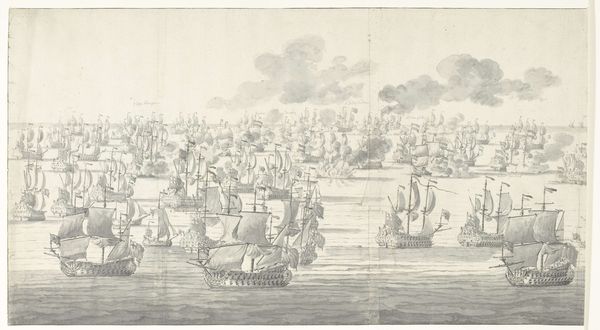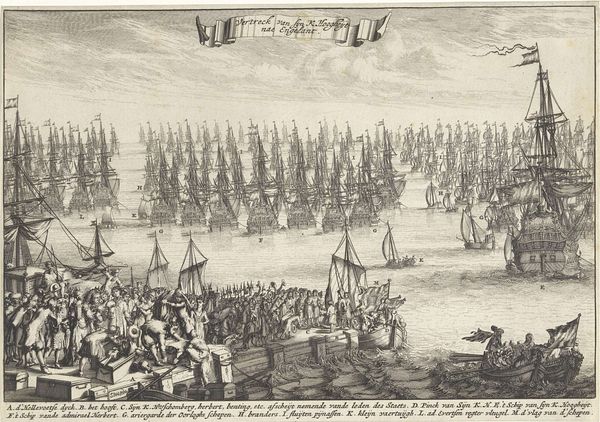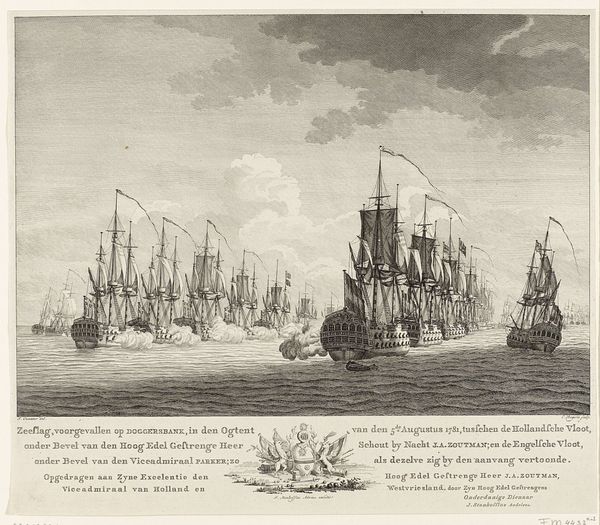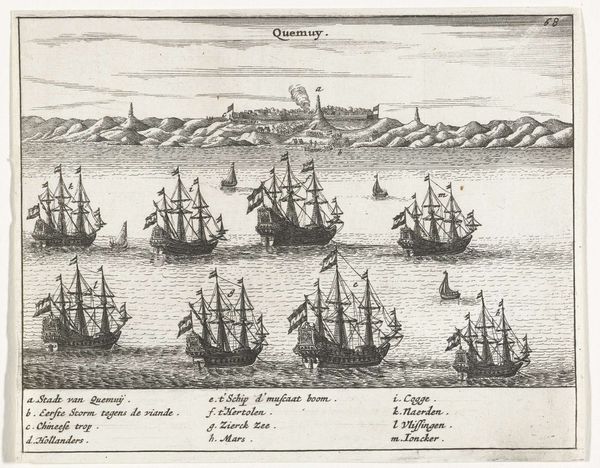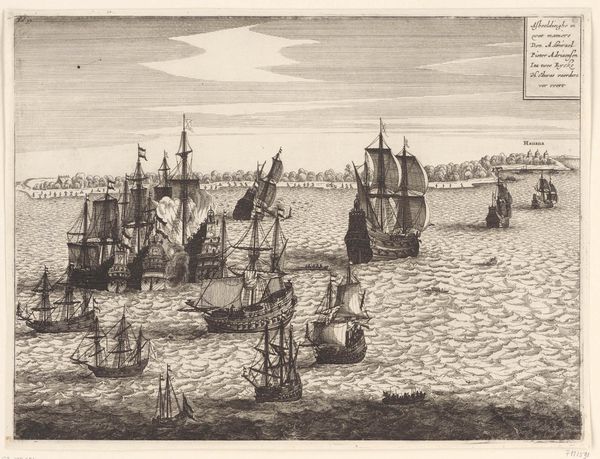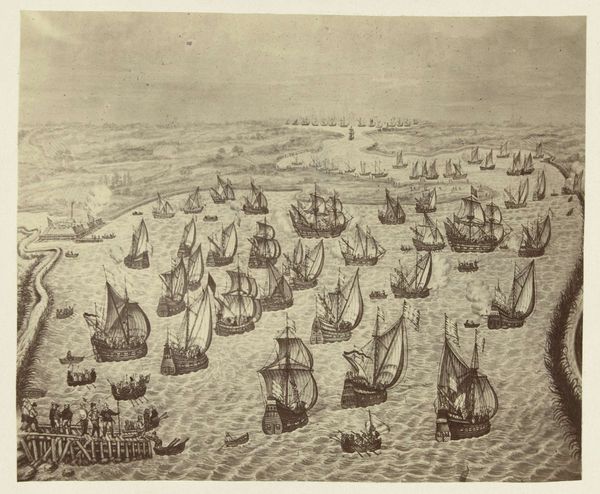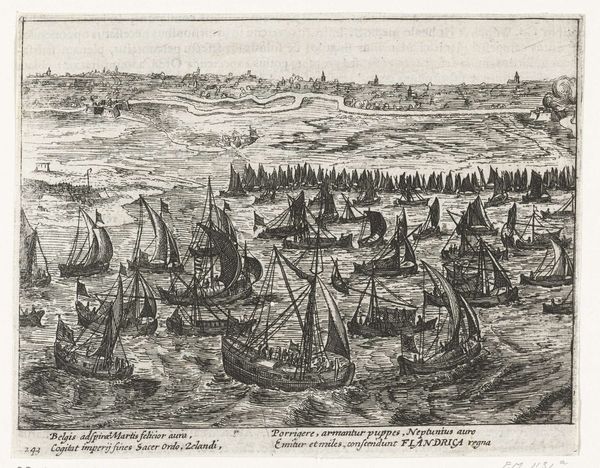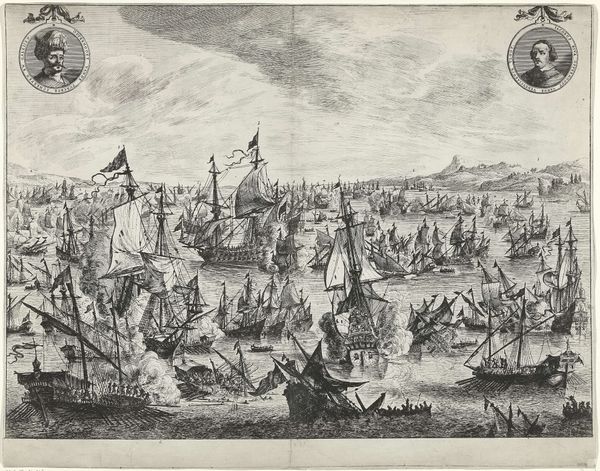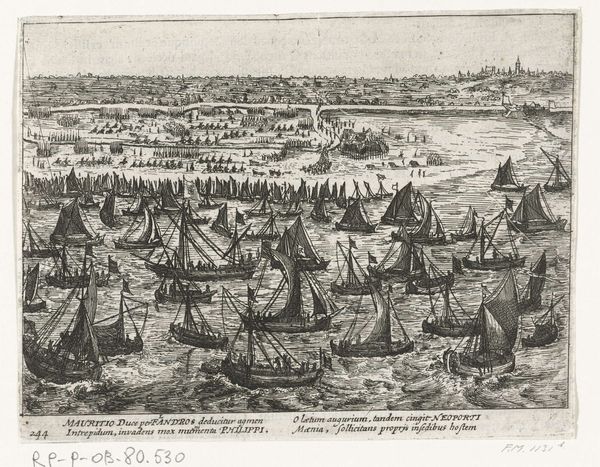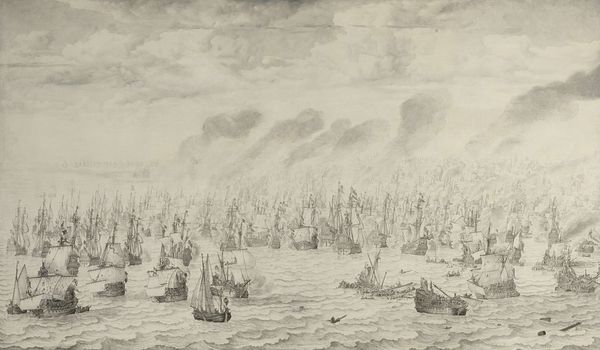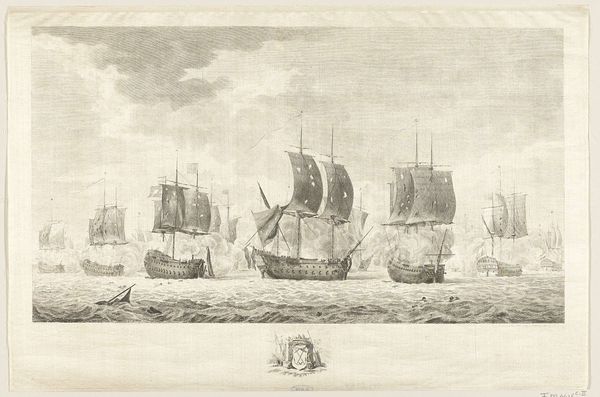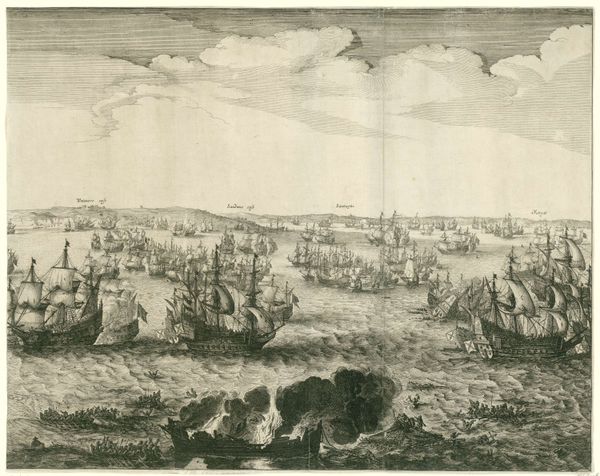
print, engraving
#
baroque
#
dutch-golden-age
# print
#
pen sketch
#
old engraving style
#
line
#
cityscape
#
history-painting
#
engraving
#
realism
Dimensions: height 238 mm, width 428 mm
Copyright: Rijks Museum: Open Domain
Editor: This is "Zeeslag," or "Sea Battle," an engraving by Wenceslaus Hollar from 1666, currently at the Rijksmuseum. There are so many ships! They seem to stretch all the way to the horizon. What story do you see unfolding here? Curator: It's fascinating to consider the social and political forces at play during the Dutch Golden Age, a period marked by intense maritime power and competition. Hollar's engraving offers us a glimpse into the visual rhetoric surrounding naval warfare at the time. Consider the sheer number of ships depicted; what statement is that making about Dutch power and reach? Editor: I guess it shows how important naval dominance was back then, almost like propaganda in a way. Were these images meant for public consumption? Curator: Precisely. Prints like this circulated widely. Think about the impact of visually representing Dutch military might. How might this image have influenced public opinion or even policy decisions related to naval expansion? Did it embolden the public or serve as a warning to rivals? Editor: That makes sense. The detail is amazing too, for an engraving. Each ship seems meticulously rendered. Is that just realism, or is something else going on? Curator: It's realism employed with a purpose. Detail legitimizes and elevates the subject. That precision lent the image authority and contributed to the narrative of Dutch naval superiority that the print served to propagate. But whose perspective are we seeing here? Editor: Good point, it's a very...distant view, I guess. So we're not exactly "in the battle". It seems more like we’re observing it, removed. Almost impartial. Curator: Indeed, and who benefits from that removed perspective? Consider the role of the art market itself; the demand for these types of images fueled their production, perpetuating specific historical narratives and solidifying the cultural value placed on maritime power. It is far more complex than simply being a battle scene! Editor: I hadn't thought about it that way, how the artwork itself played into those power dynamics. Thank you; I'll never see these old battle scenes the same way. Curator: It is through this lens, seeing art as enmeshed in its historical context, that we can unlock richer understanding.
Comments
No comments
Be the first to comment and join the conversation on the ultimate creative platform.
